
Camberwell Parish
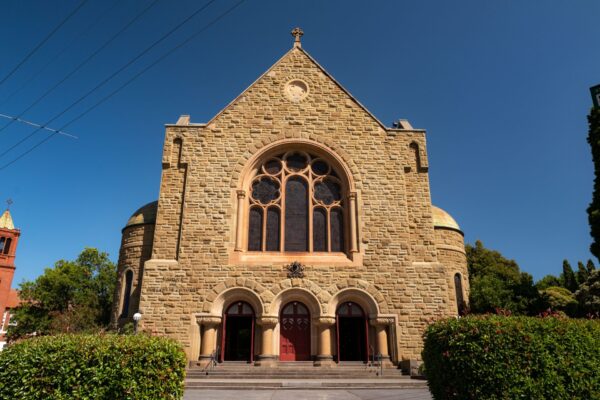
History
Our Lady of Victories, Camberwell was initially part of the Hawthorn Parish and was administered by the Jesuit Fathers from their mission in Richmond. When a combined church-school was built on the Camberwell site in 1887, the parish was named after a recently canonised Jesuit, John Berchman. The parish was separated from Hawthorn in 1889, and the first parish priest appointed was Father McGee.
The site for the church and school, purchased by the Archdiocese of Melbourne in 1853, allowed for a grander church to be built. Read more…

Church Construction and Architecture
The diocesan architect, A A Fritsch, drew up the original plans, many of which were modified, possibly because of costs. Responsibility for the project was passed to the builder, Robert Harper. The foundation stone was laid on 25 May 1913 by the then Archbishop of Melbourne, the Most Rev. Thomas Carr DD, in the presence of 45,000 people.
On 6 October 1918, Our Lady of Victories was opened by the then Archbishop of Melbourne, the Most Rev. Daniel Mannix DD, with 80,000 people in attendance. Special trains and trams had to be provided. Just prior to this event, Father Robinson altered the parish name to Our Lady of Victories.
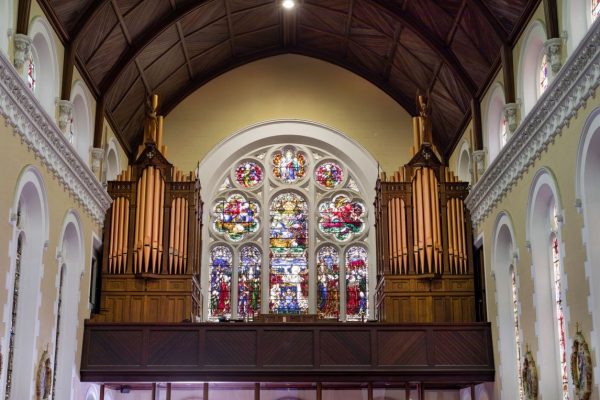
Church Organ
The organ was built by T W Magahy & Son, of Cork, Ireland in 1920 at a cost of £3,000. It was at the time the largest parish church organ in Australia. Magahy himself launched the organ with a series of recitals in 1921. It was rebuilt in 1980 by George Fincham & Sons Pty Ltd, with more recent tonal modifications, particularly to the reed stops made by Australian Pipe Organs Pty Ltd. It is an instrument of forty-four stops divided over three manuals and pedals and has a total of approximately 3,000 pipes.
As well as performing an important role in the liturgical life of the parish, the organ is an outstanding recital instrument and has hosted performances by leading international and local performers.
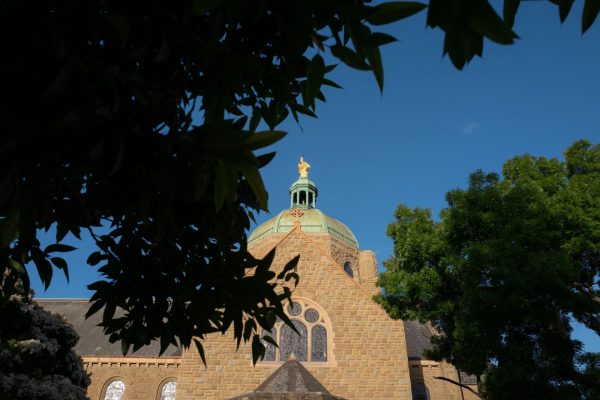
The Cupola
The church is built of Barrabool stone, from Waurn Ponds, Geelong. The most prominent external feature is the cupola – the rounded copper dome adorning the church roof. It is a notable landmark that has been a significant part of Camberwell’s landscape for over a century. The statue of Mary on the cupola is 3.7 metres tall and stands 50 metres from the ground. It was carved in wood by Signor Vincenzo Cadorin, of Venice, and is clad in copper gilt. It was placed in position in 1916, two years before the Church was officially opened.
Installation of the suite of stained glass windows was completed over several years, finishing in 1924. There are forty-three windows made by the factory of John Hardman, in Birmingham, whose work is also to be seen in the British Houses of Parliament and in many churches in the UK and the USA.
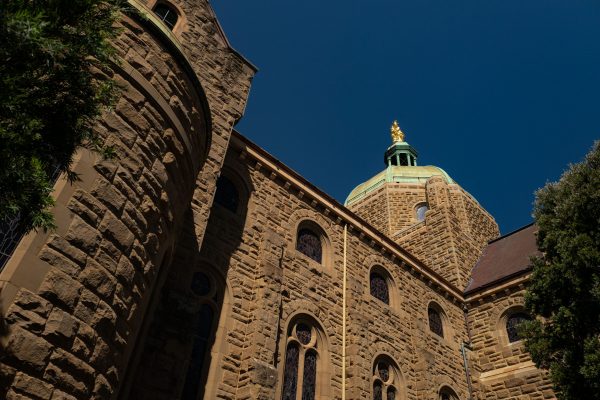
Restoration Work
Now, close to 100 years since the church was built, the ravages of weather have softened the stone. Expert examination in 2012 identified that replacement of many blocks was warranted, initially to the front facade, then to the dome and two transcept areas, and in time to the nave section. Repair of the dome section was completed mid 2016. In addition to the stone replacement work, the opportunity was taken to repair parts of the roof, roof plumbing and glazing, along with upgrading lightning protection to meet current code requirements.
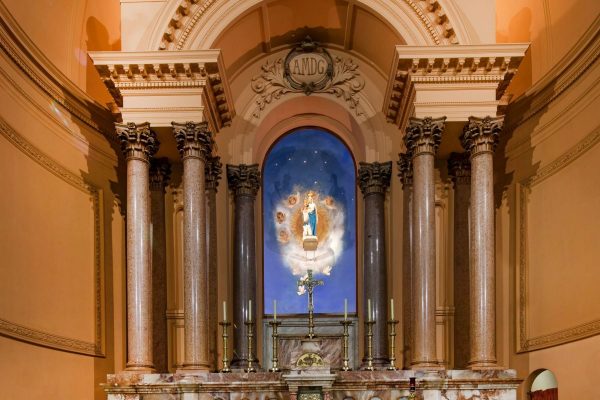
Parish Name
In 1918, Fr Robinson, the third parish priest appointed to Camberwell, altered the parish name from St John Berchman to Our Lady of Victories.
In the Catholic tradition, Our Lady of Victory, or Our Lady of Victories, is one of several titles for the Blessed Virgin Mary, There are as many images and expositions of Our Lady of Victory (or Victories), as there are artists and devotees. She is viewed as defeating all heresies and being triumphant in military battle. Next to Christ her Son, her powerful intercessions plead our cause with a mother’s heart and concern. By way of example, St Therese of Lisieux, when she was a young girl, was miraculously healed of a serious illness due to the intercession of Our Lady of Victories.

Patron Saint
Over the centuries, devotions to Our Lady grew among saints, popes and Catholics worldwide, and many institutions were named in honour of Mary. Pope Pius V, for example, credited victory in the Battle of Lepanto (1569) to her intercession. After the battle, Pope Pius V, instituted ‘Our Lady of Victory’ as an annual feast to commemorate the victory. The Pope inserted the title “Help of Christians” into the Litany of Our Lady as it was believed that the threat of invasion had been averted through Mary’s intercession as a rosary procession had been offered on that day in St. Peter’s Square in Rome for the success of the mission.
So the name “Our Lady of Victory(ies)” has a certain synchronicity with the title of Australia’s Patron “Our Lady Help of Christians.”
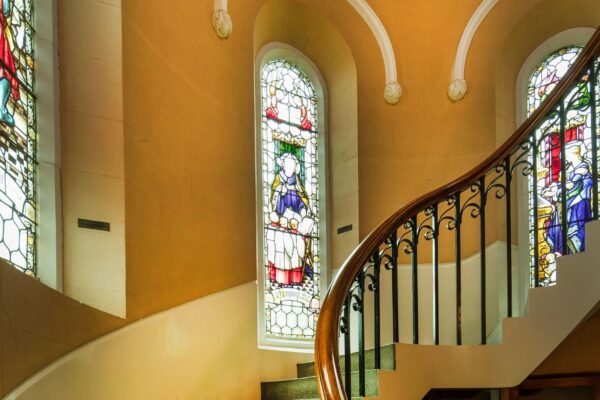
Basilica Conferral
On 9 December 1996, Pope John Paul II proclaimed Our Lady of Victories church to be a Minor Basilica.
Since the Second Vatican Council, a church may be declared a’ minor basilica’ if it meets a number of criteria:
• it must be a dignified and attractive building with an active liturgical life;
• a number of specific feasts and liturgies should be observed;
• the basilica should lead in liturgical music.
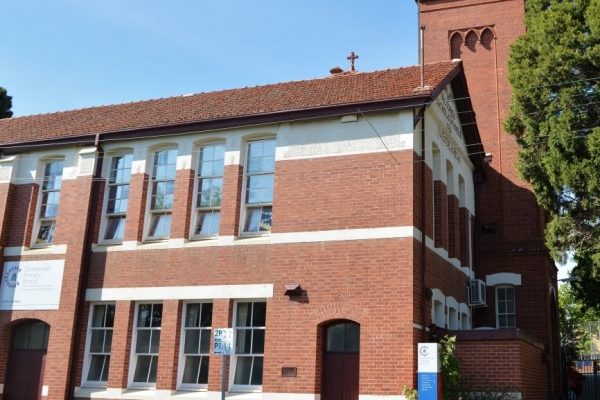
Parish School
The school started life as St John Berchman’s School in the 1890s. The Sisters of the Faithful Companions of Jesus (FCJ) administered the school from 1897 through to 1902, travelling daily by train from Vaucluse, in Richmond. In 1904, the Josephite Sisters began their 75-year association with the school. Read more …
Significant demographic changes in Camberwell began to occur in the 1990s and beyond. Over time, declining enrolments left the then Parish Priest, Fr Michael Morgan, with no choice but to close the school. This occurred in December 2014. The school site was subsequently leased by the Department of Education as an additional campus for Camberwell Primary School. This leasing arrangement is ongoing.
Parish Priests of Our Lady of Victories
| 1889 – 1894 | Fr McGee |
| 1895 – 1900 | Fr O’Callaghan |
| 1901 – 1918 | Fr Robinson |
| 1919 – 1935 | Fr O’Brien |
| 1935 – 1947 | Fr Gibbons |
| 1948 – 1968 | Monsignor Martin |
| 1970 – 1974 | Fr Conquest |
| 1975 – 1988 | Fr O’Driscoll |
| 1988 – 2002 | Monsignor Walsh |
| 2003 – 2015 | Fr M Morgan |
| 2016 – continuing | Fr B Reed |